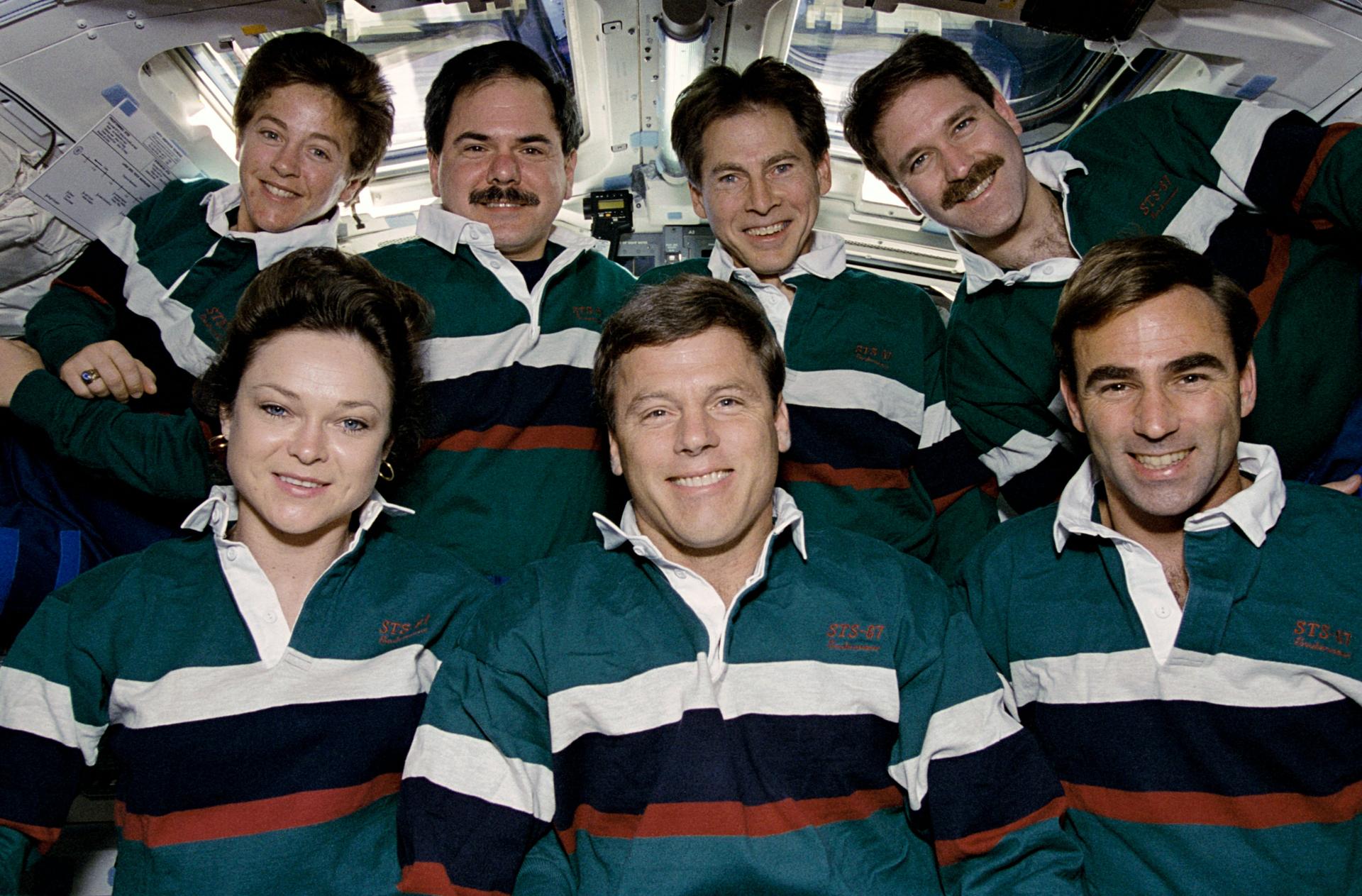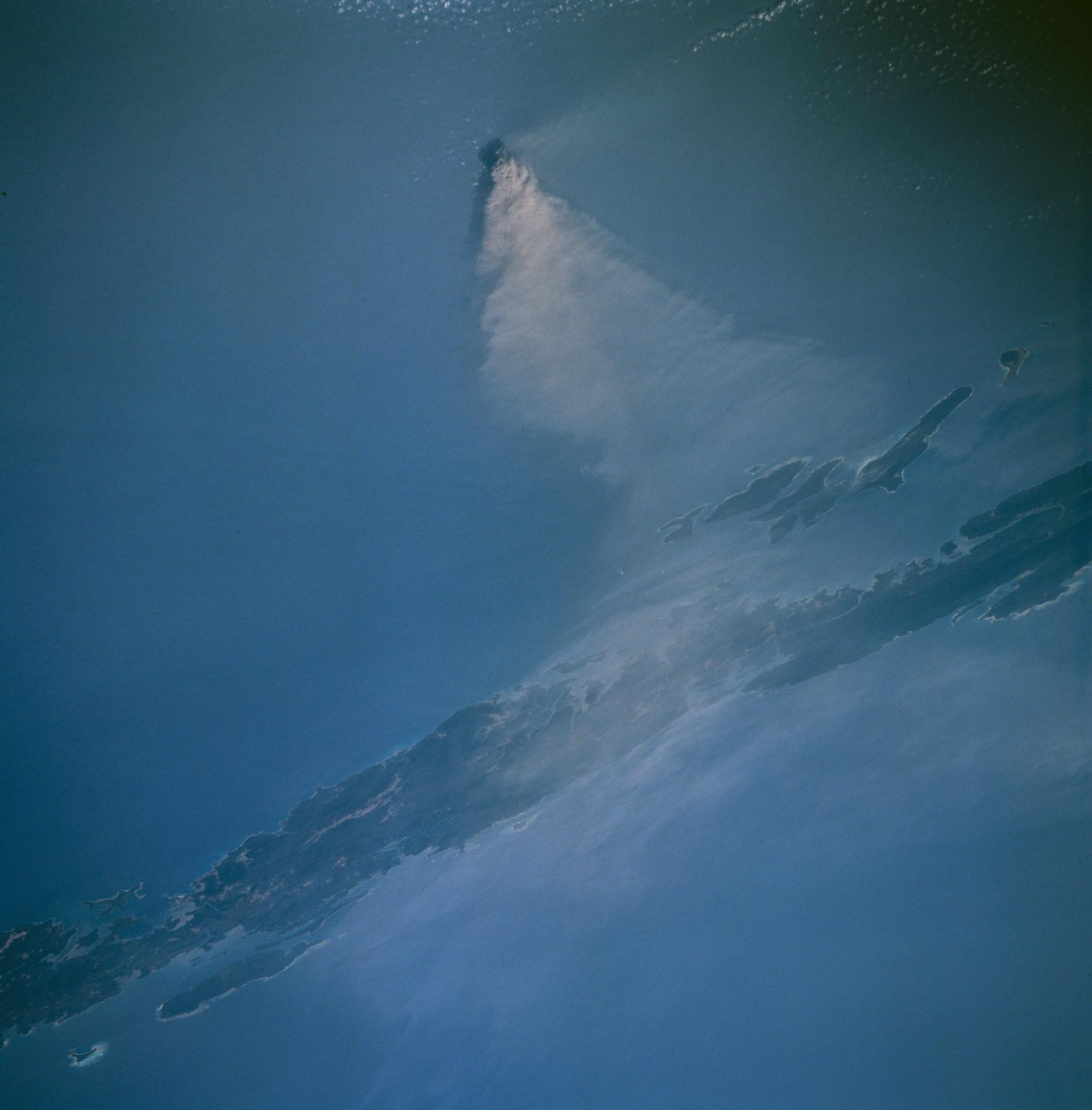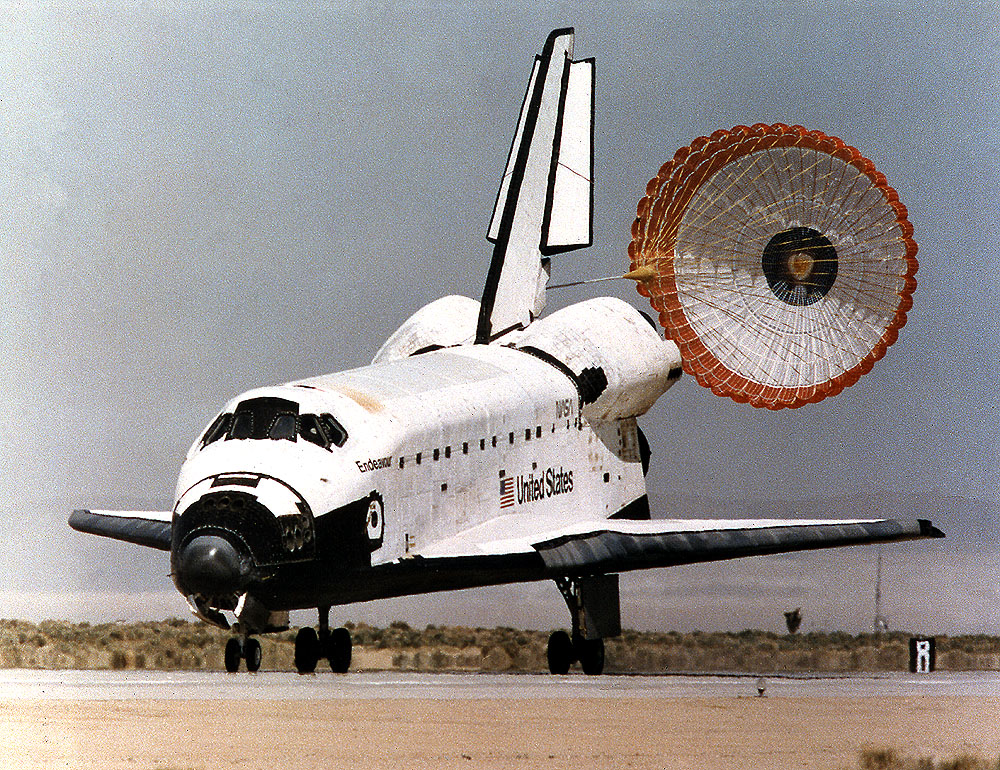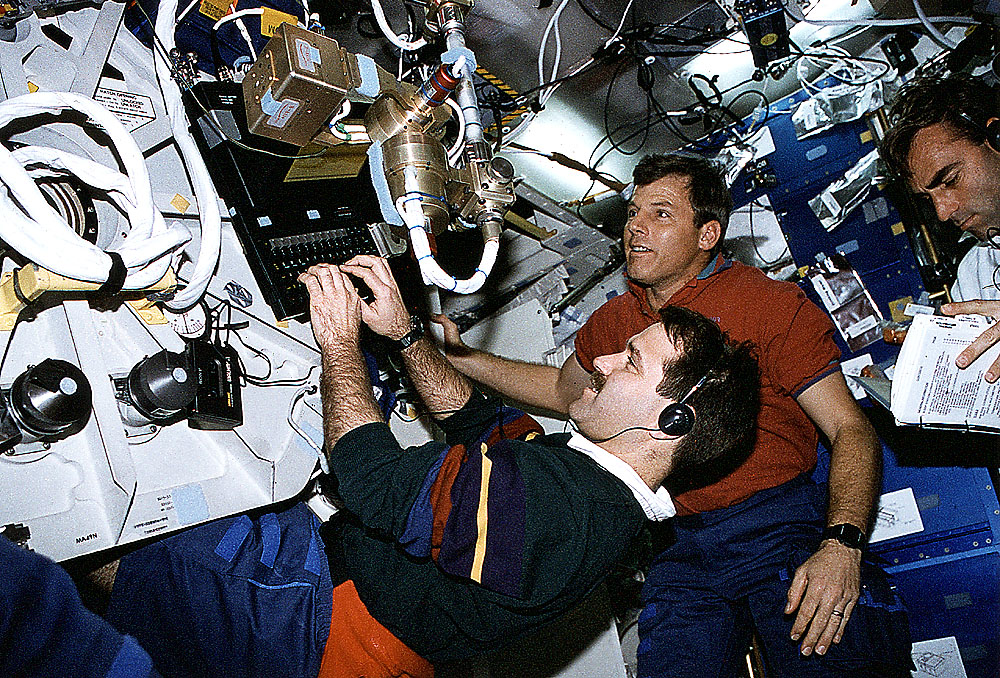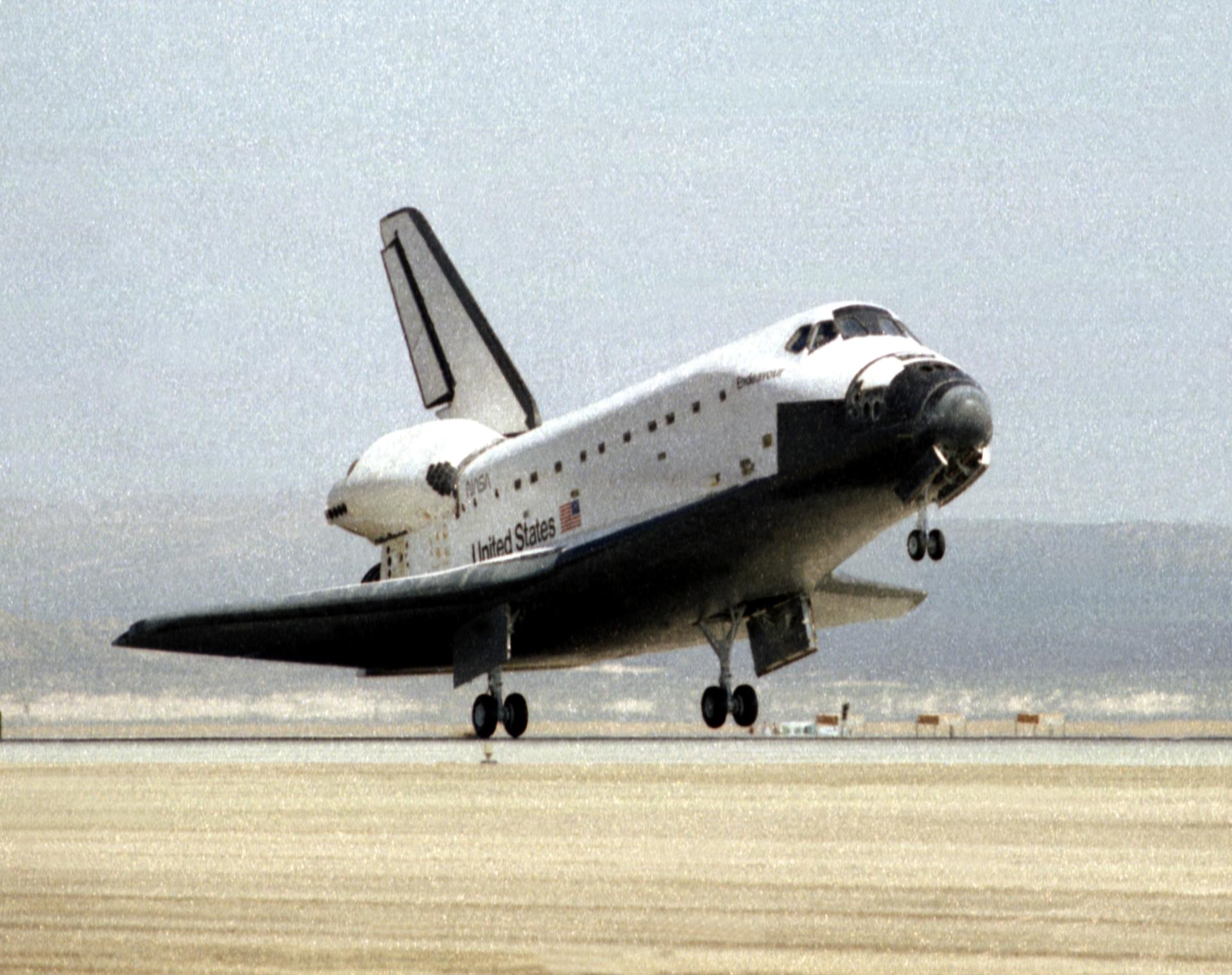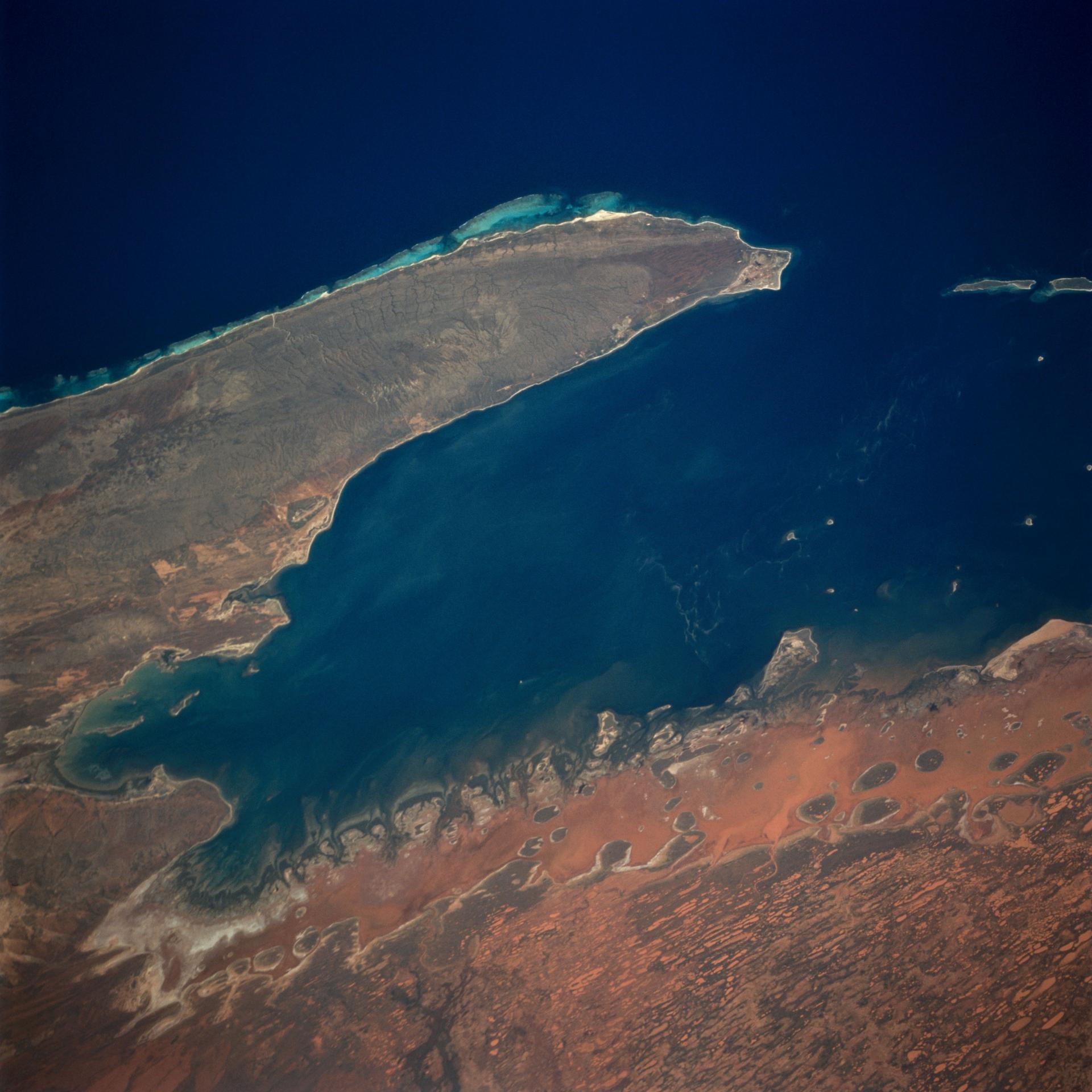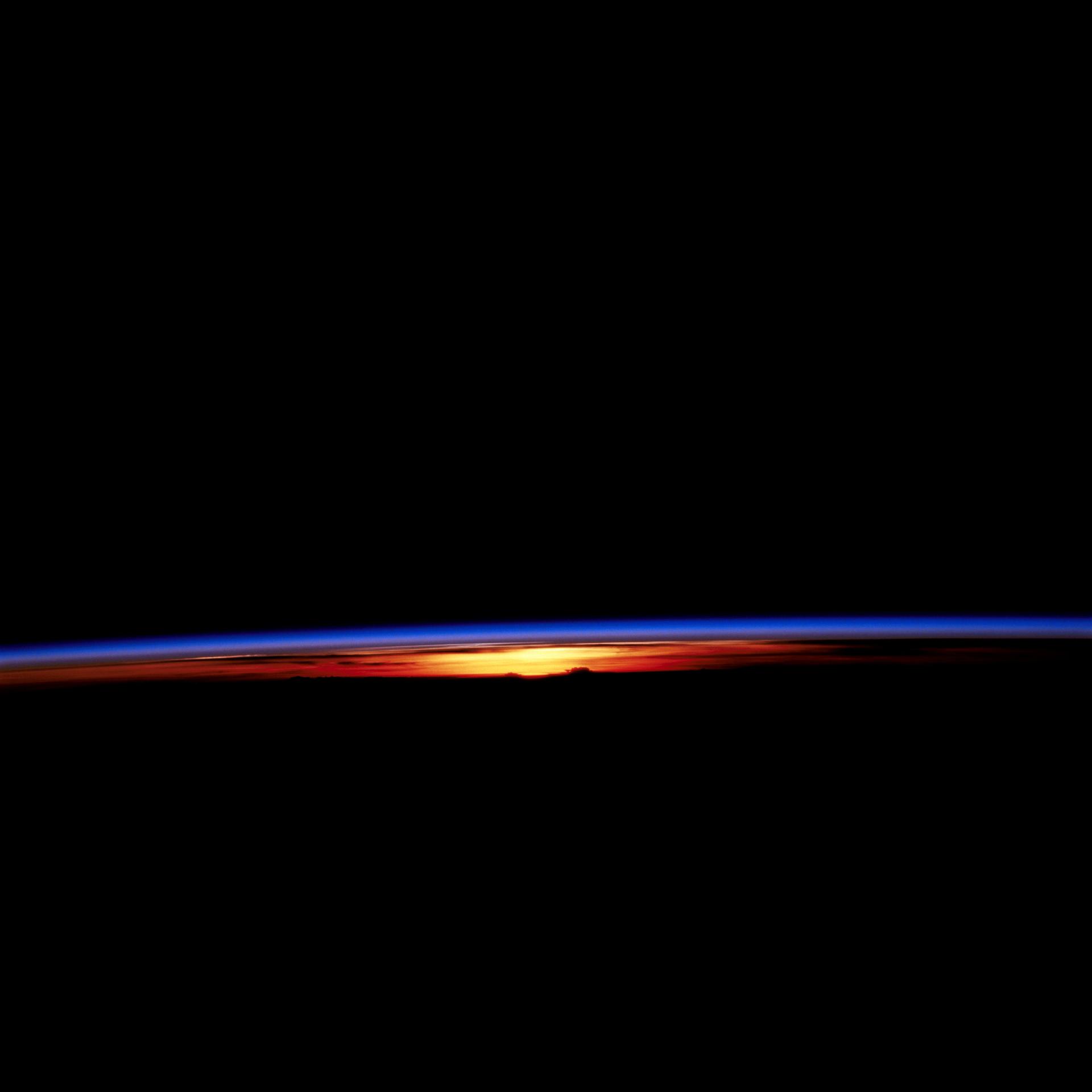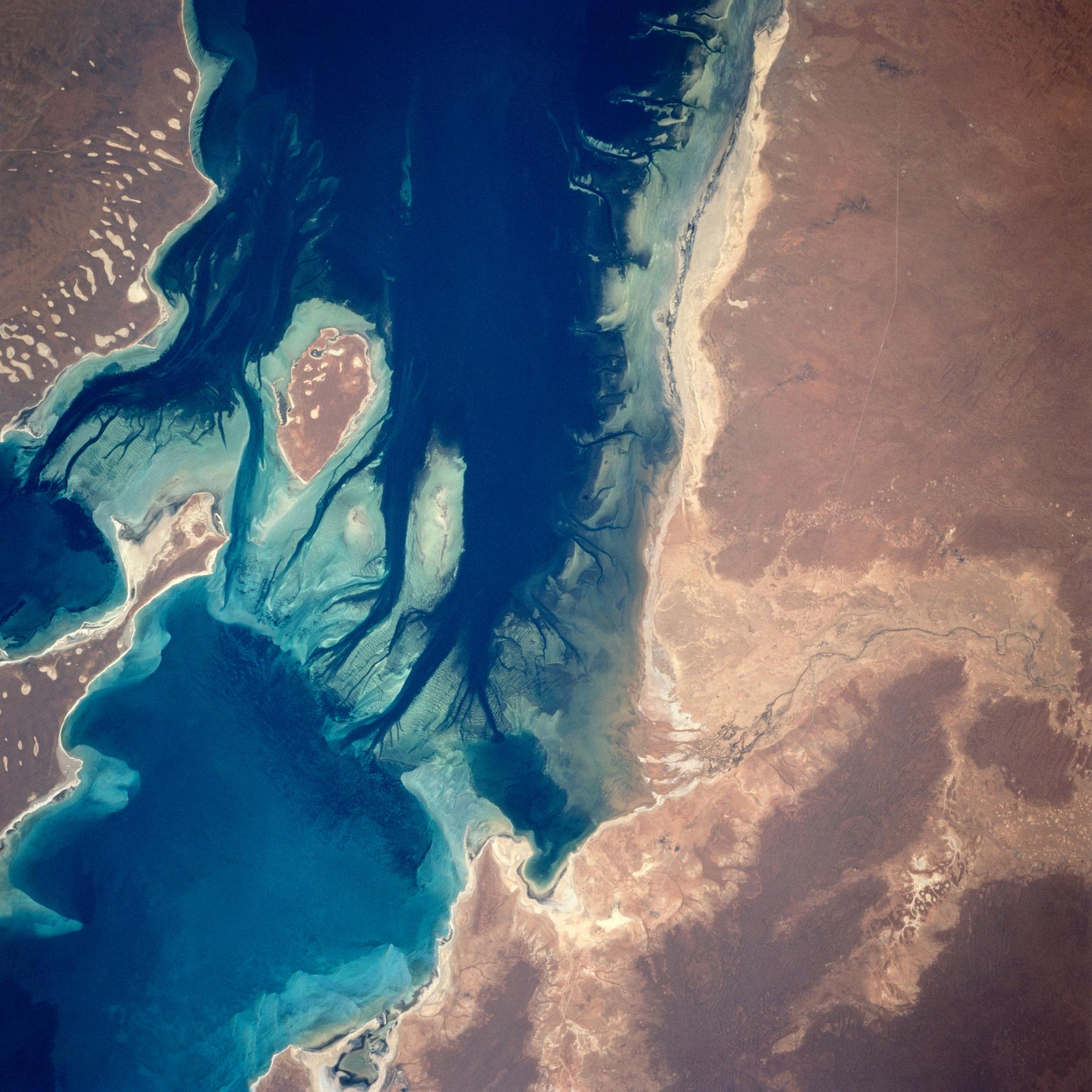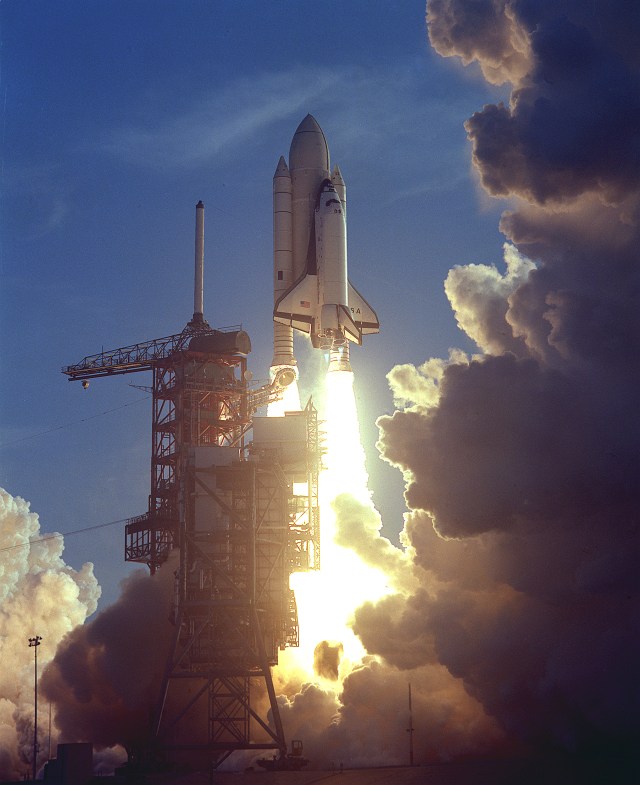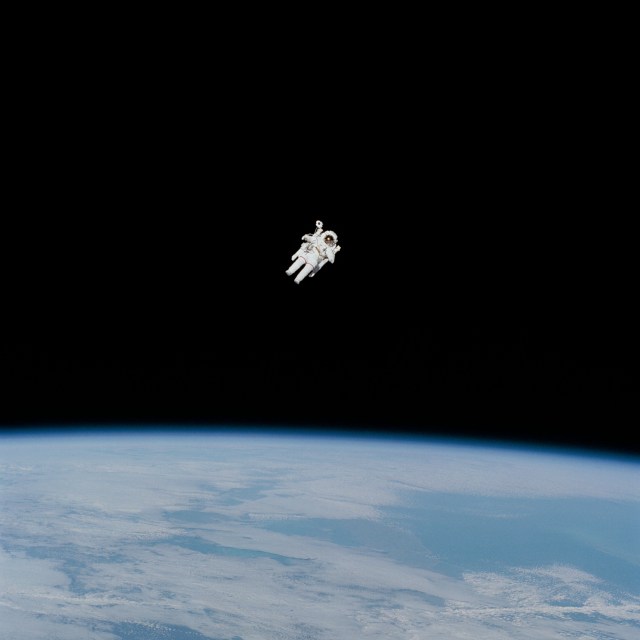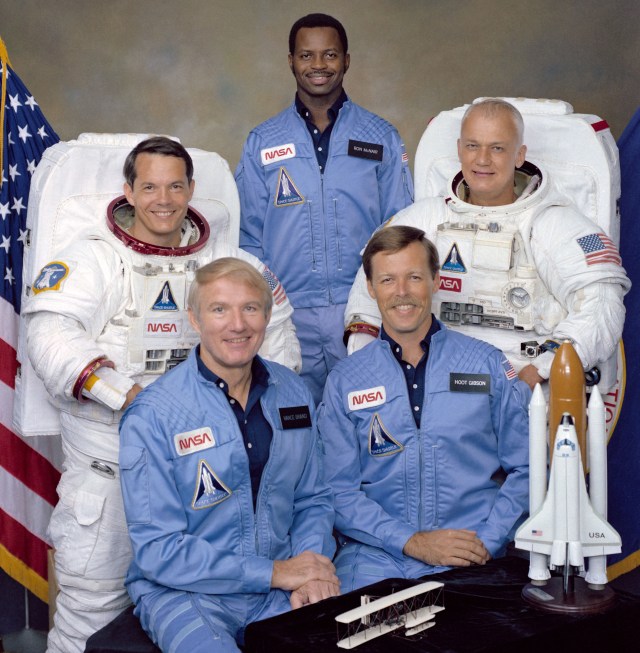
STS-67
Astro-2 marked the second flight of three ultraviolet telescopes flown on Astro-1, mounted on Instrument Pointing System on Spacelab pallet in cargo bay.
orbiter
mission duration
Launch
Landing

STS-67 Mission Facts
Mission: ASTRO-2
Space Shuttle: Endeavour
Launch Pad: 39A
Launched: March 2, 1995. 1:38:13 a.m. EST
Landing Site: Edwards Air Force Base, Calif.
Landing: March 18, 1995 at 1:47:01 p.m. PST
Runway: 22
Rollout Distance: 9,975 feet
Rollout Time: 59 seconds
Revolution: 262
Mission Duration: 16 days, 15 hours, 08 minutes, 48 seconds
Orbit Altitude: 187 nautical miles
Orbit Inclination: 28.45 degrees
Miles Traveled: 6.9 million
Crew
Stephen S. Oswald, Commander
William G. Gregory, Pilot
Tamara E. Jernigan, Payload Commander
John M. Grunsfeld, Mission Specialist
Wendy B. Lawrence, Mission Specialist
Ronald A. Parise, Payload Specialists
Samuel T. Durrance, Payload Specialists
Mission Highlights
Endeavour logged 6.9 million miles (11 million kilometers) in completing the longest shuttle flight to date, allowing sustained examination of the “hidden universe” of ultraviolet light. Primary payload, Astro Observatory, flown once before — on STS-35 in December 1990 — but second flight had almost twice the duration. Planned Astro-2 observations built on discoveries made by Astro-1, as well as seeking answers to other questions.
Astro-2 marked the second flight of three ultraviolet telescopes flown on Astro-1, mounted on Instrument Pointing System on Spacelab pallet in cargo bay. Hopkins Ultraviolet Telescope (HUT), developed at the Johns Hopkins University, performs spectroscopy in far ultraviolet region of spectrum to identify physical processes and chemical composition of a celestial object. Improvements made to HUT after Astro-1 made it three times more sensitive. Wisconsin Ultraviolet Photo-Polarimeter Experiment (WUPPE), built at the University of Wisconsin, measures photometry and polarization of ultraviolet radiation from astronomical objects. Ultraviolet Imaging Telescope (UIT), sponsored by NASA’s Goddard Space Flight Center, takes wide-field photographs of objects in ultraviolet light.
Crew began activating Astro-2 only hours after liftoff for around-the-clock observations. Observational sequences planned on daily basis in two-orbit, or three-hour blocks, with one telescope assigned priority. Astro-2 demonstrated benefits of human interaction in on-orbit astronomy. Besides being able to position orbiter most advantageously for observations, crew members also could manually acquire observation target if desired.
Astro-2 program aimed at exploring 23 different science programs, and all were achieved. HUT, considered complement to Hubble Space Telescope, completed more than 200 separate observations of more than 100 celestial objects. Investigators believed telescope collected enough data to meet its primary mission objective: detecting presence of intergalactic helium, telltale remnant of theoretical Big Bang explosion that began universe. HUT, in conjunction with Hubble telescope, took ultraviolet measurements of Jupiter’s aurora; also studied Jupiter’s moon Io, and Venusian and Martian atmospheres.
UIT cameras imaged about two dozen large spiral galaxies for inclusion in atlas of such galaxies, and made first ultraviolet images of entire moon. Also studied rare, hot stars that are 100 times as hot as sun; elliptical galaxies and some of faintest galaxies in universe. Investigators were disappointed upon developing UIT film to learn that one of its two cameras had malfunctioned undetected on orbit, but an initial assessment showed that 80 percent of science objectives still would be met.
WUPPE yielded a “treasure chest of data,” according to its principal investigator, greatly expanding database on ultraviolet spectropolarimetry. Targets for study of interstellar medium included dust clouds in Milky Way and nearby galaxy, Large Magellanic Cloud. WUPPE also studied several types of stars, including Wolf-Rayet and Be stars. Also able to capitalize on opportunity to study three recently exploding novae.
STS-67 became first advertised shuttle mission connected to the Internet. Users of more than 200,000 computers from 59 countries logged on to Astro-2 home page at Marshall Space Flight Center; more than 2.4 million requests were recorded during mission, many answered by crew on-orbit.
Other payloads: Two Get Away Special canisters located in payload bay held Australian-built Endeavour telescope; also built to study ultraviolet realm, it achieved one hundred percent of pre-mission objectives. In-cabin payloads were Commercial Materials Dispersion Apparatus Instrumentation Technology Associates Experiments-03 (CMIX-03), which featured an array of biomedical, pharmaceutical, biotechnology, cell biology, crystal growth and fluids science investigations, including one with potential for anti-colon cancer treatment. Protein Crystal Growth experiments included two setups in middeck lockers. Also flown was Middeck Active Control Experiment (MACE) to study how disturbances caused by a payload impacts another payload attached to same support structure.
Only on-orbit problem of note included a leaking Reaction Control System thruster that briefly delayed Astro-2 activities.
STS-67
Shuttle News
Retired Space Shuttle Locations
Shuttle Atlantis – Kennedy Space Center Visitor Complex Shuttle Discovery – Steven F. Udvar-Hazy Center Shuttle Endeavour – California Science…
Read the Story



























